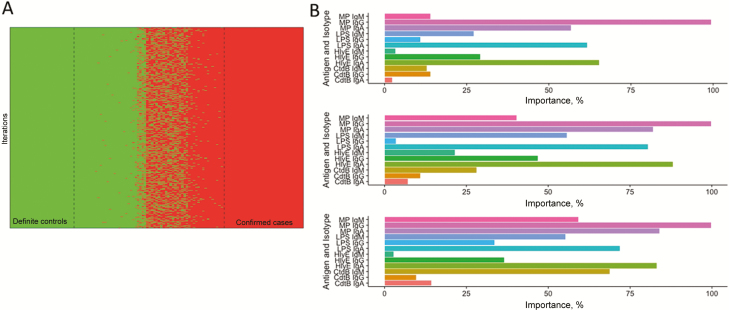Figure 2.
Optimal biomarker selection by probabilistic classification and machine learning methods. A, First, 1000 sets were generated in which samples were probabilistically assigned to typhoid or control status according to the results of 5 tests (ie, blood culture, Widal assay, Typhidot and Tubex tests, and typhoid/paratyphoid test [TPTest]) and clinical status (known healthy controls or confirmed alternative diagnoses).B, Machine learning algorithms were then performed on each set (from top to bottom: random forest, support vector machines, and partial least squares regression) to identify the most predictive antigen-antibody isotypes and assessed by means of variable importance ranking. Abbreviations: CdtB, cytolethal distending toxin; HlyE, hemolysin E; Ig, immunoglobulin; LPS, lipopolysaccharide, MP, membrane preparation.

